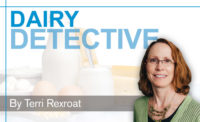As a global leader in sustainability, the U.S. dairy community has a long-standing commitment to healthy people, a healthy planet and healthy communities. This commitment is also one held by the global dairy sector, which helps create resilient and sustainable food systems to ensure high-quality nutrition for people around the world.
Now more than ever, it’s important to communicate the important role dairy plays ahead of key events such as the United Nations’ Food Systems Summit being held this year. The summit includes five action tracks that lay the groundwork for defining what a positive-food-systems future looks like and how to achieve it — with animal-sourced foods such as dairy offering benefits in each area.
The original upcyclers
Between 10% and 25% of a dairy cow’s diet comes from human food byproducts. A cow’s ability to process materials that humans can’t digest — including byproducts from food processing such as citrus pulp and almond hulls — has helped minimize waste. Nationwide, more than 34 million tons of leftover food are fed to farm animals and kept out of landfills.
High-quality proteins
Animal-sourced foods play a key role in healthy human nutrition and development. High-quality proteins, including those found in dairy ingredients, are associated with better growth, cognitive performance and motor development among children.
International trade ensures affordable access to animal-sourced foods needed around the world. For dairy ingredients, trade allows local partners to formulate more nutritious versions of local products. For example, whey protein could be added to a product, thus boosting local production and productivity while providing affordable, nutritious food for global populations.
Advancements in sustainability
Thanks to U.S. dairy farmers’ careful management and adoption of innovative practices, producing a gallon of milk in 2017 involved 30% less water, 21% less land and a 19% smaller carbon footprint than it did in 2007. The carbon footprint of a glass of U.S. milk today is two-thirds smaller than it was 70 years ago.
The U.S. dairy industry has aggressive 2050 goals to proactively protect the planet. While U.S. dairy production accounts for only 2% of total U.S. greenhouse gas (GHG) emissions, industry leaders have joined to examine the viability of achieving net-zero GHG emissions and significant water quality goals.
U.S. dairy takes an open, transparent and science-based approach to measuring and communicating its progress. Visit USdairy.com or ThinkUSAdairy.org/sustainability for more information about the U.S. dairy community’s sustainability efforts.

